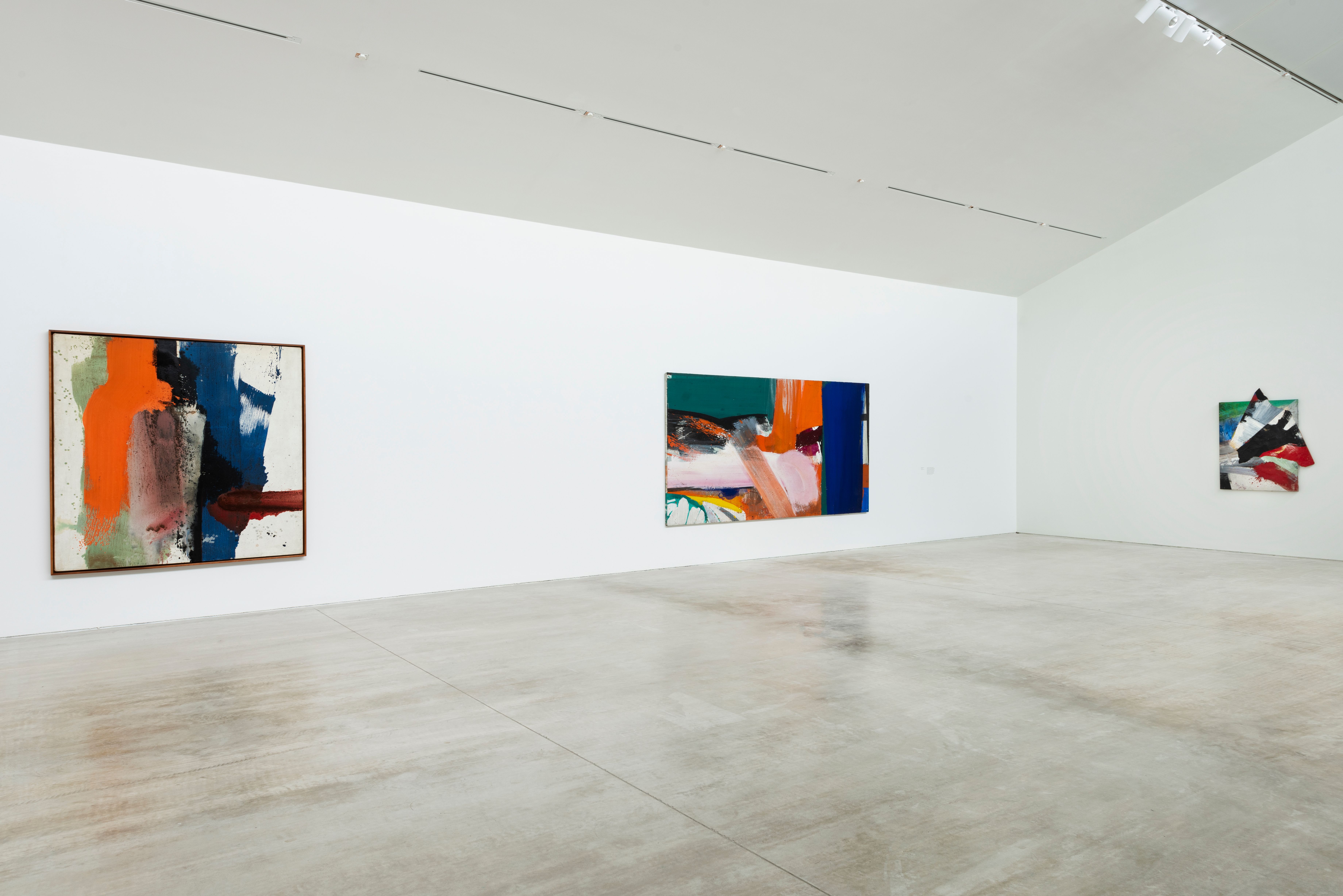


Ed Clark, 2024. Installation View. © Courtesy Turner Contemporary. Photo by Thierry Bal
Turner Contemporary
Rendezvous, Margate, CT9 1HG
Although he became famous only quite late in life, Ed Clark (1926-2019) was one of the early American Abstract Expressionist painters working in New York. I was lucky enough to get a sneak preview of this new show on a glittering, breezy afternoon in Margate at the end of last week. The walk from the station, along Marine Drive, was the perfect preparation: the expanses of sand and the skinny line of the sea at low tide in the distance, the salty iodine scent of seaweed. The window from the atrium of Turner Contemporary frames the grey sea and the horizon line in thrilling proximity; I can think of a few galleries by the sea, but this is a more dramatic view than the harbourside Pier Arts Centre in Orkney or Hastings Contemporary on its heaped pebble beach.
Even in the midst of the installation, with equipment littered about still, I have never seen the galleries at Turner Contemporary look so good. The North Gallery in particular, flooded with cool light through high ribbon windows, could have been made with this group of paintings by Ed Clark in mind. A series of shimmering horizontals, rippling with colour, lead the eye from one canvas to the next. It is as if sea and air and light were distilled into paint.
Turner Contemporary is mounting the first ever institutional show of Clark’s work in Europe. Though in recent years he has been shown extensively in the US, the only chance we in the UK have had to see the work was in Tate’s 2020 Soul of a Nation exhibition. Clark lived through an extraordinary period in history: born in New Orleans in 1926, the Great Depression forced his family to relocate to Chicago where Clark was educated in Catholic schools. At the age of 17 the artist left school and joined the US Army Air Services. When he was discharged in 1946 he benefitted from the post war GI Bill that funded ex-servicemen to go back to college, taking evening classes at the prestigious School of the Art Institute of Chicago, and then in 1952, with fourteen months funding still available he set out for Paris.
The Paris Clark encountered then might still have been recovering from the privations of the Second World War, but it was possible to run into Giacometti or James Baldwin in the Café du Dôme and be a part of a uniquely bohemian society. He enrolled at the prestigious Academie de la Grande Chaumière in Montparnasse and was exposed to all the progressive painting of the period. An encounter with the work of Nicholas de Stael was particularly influential and lead to his defining innovation: to use a household broom instead of a paint brush. The American Abstract Expressionists were known for their use of household paints and decorators’ brushes. Franz Klein famously used an 8” brush and bought paint in five-gallon cans. Clark picking up a broom to paint his canvasses flat on the floor was then, in tune with the times. He has described the way the broom allowed him to translate more of his own bodily energy and gesture into the paint, calling his technique the “big sweep”. Although as a young man, Clark had an enormous facility as a figurative artist, he rapidly became concerned only with abstraction and with the engagement with paint itself. In a work like Paris Series #2, 1987, the brushstrokes are almost architectural.
By the late 50s, the burgeoning scene in New York had enticed Clark back to the US. Here his innovations continued with the use of collage, notably using collaged elements to extend the painting beyond the rectangular borders of the canvas. Untitled, 1957, included in the current exhibition, was shown almost immediately in the artist-run Brata Gallery on Tenth Street.
While this pioneering formal device was certainly influential on other artists, it must be noted that, as an African American, Clark was largely ignored by the wider arts establishment. For most of his life he had no commercial gallery support, but continued to paint, nevertheless, travelling in Nigeria, Martinique, Bahia, Morocco and Mexico. Each new landscape found its way into his paintings, influencing his colour palette: the red earth of Nigeria manifests, for example, in works such as Ife Rose, 1974, a different pallet in the Egyptian Series from 1997 in the final room of the show.
While he was included in several group exhibitions in the 1990s at the Studio Museum in Harlem, it was not until 2014 that Clark finally achieved wider recognition. Painter David Hammons gave him a solo exhibition at the Tilton Gallery in New York and he was included in landmark exhibitions such as Inventing Downtown at the Grey Art Gallery at New York University, which focussed on artist-run spaces in New York from the mid-50s to mid-60s and radically expanded the standard narrative of post-war American art. Alongside contemporaries such as Norman Lewis, Jack Whitten and Sam Gilliam, Clark staked a claim for abstraction for African American painters in a world in which figuration aligned more obviously with the civil rights movement and the struggle for social justice that defined much of the second half of the twentieth century.
Like the recent Howardena Pindell exhibition at the Fruitmarket Gallery in Edinburgh, this show at Turner Contemporary will come as a revelation to many UK audiences. The elegant, Chipperfield-designed spaces offer the opportunity to introduce Clark in breadth and depth and, importantly, present the work in the natural light that was so important to his painting. It is a must see this summer
Caroline Douglas, Director
Ed Clark, Turner Contemporary, 25 May - 1 September 2024